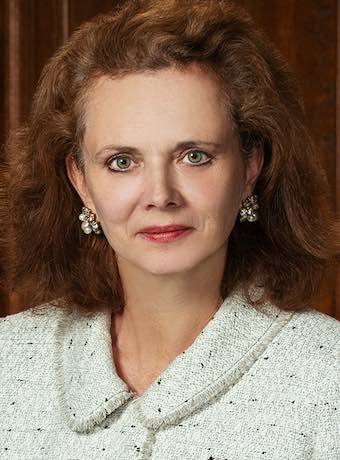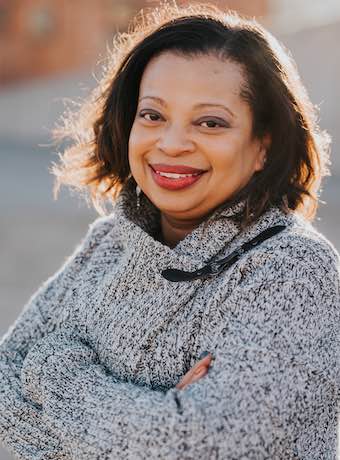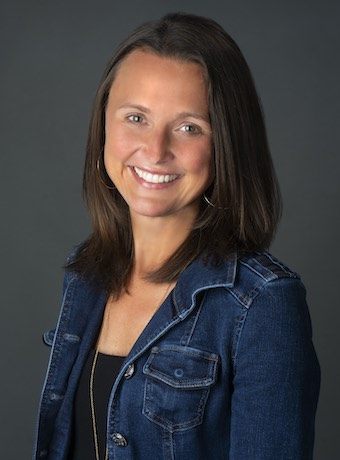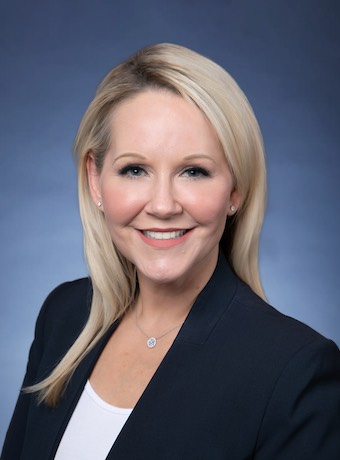9 minutes
Women serving as the first female CEOs at their credit unions offer tips and guardrails for the next generation of top female leaders.
The percentage of female CEOs in the credit union industry is on a positive trajectory, rising to approximately 50% in 2021 from about a third in 2017. This ratio is better than that of many other industries, including banking. However, the number drops when the data is segmented by credit union asset size, with the number of women in the top leadership position at larger credit unions still below 20%, according to CUNA’s “2021 Women in Credit Union Leadership” study.
This means it’s still not uncommon for female CEOs to find themselves being the first woman ever hired or promoted to the role at many credit unions. For some women, the honor of being the “first female” in the top leadership role is a positive visible sign of the progress women have made in the workplace and of the opportunities available to them in the industry today—but with that can come new challenges, pressures and scrutiny.
How It Feels to Be First
Women who have risen to the role of CEO at credit unions are mindful of the significance of that achievement, especially as the world is still emerging from the effects of COVID-19.
CUES member Tansley Stearns, CME, CSE, CEO of $1.3 billion Community Financial Credit Union, Plymouth, Michigan, notes that working women in particular are still combating the pandemic’s continuing impact on employment trends. Women in senior management positions, working mothers and Black women have experienced some of the largest employment challenges due to the pandemic, according to global management consulting firm McKinsey & Company.
As the first female CEO at her 70-year-old financial institution, “it’s a privilege to help shape our future” in this current environment, Stearns says. “As an industry that has a stronger representation of women leaders, I’m excited for credit unions to continue to shape new ideas that support the full lives of all human beings. We can be employers of choice that create a path for the future of work.”
LeAnn Kaczynski, CEO of $872 million Smart Financial Credit Union in Houston, Texas, looks forward to a time when it won’t be considered a milestone for a credit union to have a female CEO. “Many of my fellow CEOs are male, and while I think most make an effort to be inclusive, there are still some of the good old boys out there that really don’t look at women in the same role as peers. It’s unfortunate that in the 21st century we aren’t there yet, but things are changing.”

Faye Nabhani, president of $4.4 billion SAFE Credit Union, Folsom, California, says being selected by the board to be the first female CEO in the 82-year-old organization’s history is a career capstone that makes her feel proud and honored, and she thinks of herself as a role model for other female leaders. Nabhani became president in January 2022 after joining the credit union as chief credit officer in 2016. She assumed the role of CEO in January 2023 after former CEO Dave Roughton retired.
“I’m excited to be in this role and what this could represent for others.” But, she notes, it’s just as important to acknowledge that the role is about “the job I’ve done, my vision, the way I engage with my leadership team, the organization and our members, and the things we do to serve them.”
In April 2021, when CUES member Tonita Webb, CCE, was named CEO of $789 million Verity Credit Union, which has served Seattle communities for nearly 90 years, she marked several milestones by becoming not only the first female to hold the role at her institution, but also the first Black, Indigenous or person of color in the top leadership position.
Webb notes that some of the challenges the first women to hold the CEO role face are “self-inflicted,” in that most of the pressure they feel is generated by themselves. “Being the first anything puts pressure on you. There are people looking to see how well I do. The feeling that ‘I can’t mess this up for everyone else’—I had to right-set that thinking,” she says.

Representing the Next Generation of Women
The road to credit union CEO has not always been straightforward for women. For instance, Nabhani comes from a lending background, and it’s not common for anyone with a lending background—much less a woman—to become CEO, she notes.
Nabhani says that it took a lot of hard work, perseverance and determination to get where she is today. “When I think about my early career, I don’t think I necessarily thought I was going to be a CEO. I’m a curious, interested person. That curiosity and the journey of wanting to be challenged and learn more are what brought me to this point.”
Women don’t always think of themselves as leaders, but finding the right mentors at the right career stage can make all the difference, according to Nabhani. With more than 25 years in the credit union industry under her belt, she feels the opportunity to be a role model and help other women advance on their career path is important. “I’ve had mentors in my history who have had an impact in helping me get here, and I like the idea of paying that forward,” she says.
Nabhani notes that she grew up in the credit union industry and had a chance to learn about the industry first-hand as she progressed professionally, but not everyone knows about the opportunities there and how to create a career path. “We don’t yet have a pipeline of women. When you don’t have female influence in an area, it’s a miss for us all.”
Both Webb and Nabhani note there are still not as many female leaders at larger, more complex credit unions. “I’m seeing that change, but we still have work to do,” Webb says.
Webb grew up in a community similar to the ones served by Verity CU, and she remembers her family’s struggles. “I understand the systemic challenges, and I get to be a part of dismantling those systems so other families don’t have to struggle the way we did and [so] they can see possibility for themselves. That excites me and gets me up in the morning,” she says.
“I’m seeing more and more women and BIPOC women become leaders of credit unions, and that is encouraging. Communities are able to see themselves represented,” Webb adds.

Stearns likewise emphasizes the importance of representation for women in senior leadership roles in the industry. “The potential I see and greatly value is expanding the places where young people see a woman in leadership roles,” she says.
“One way that we help people seize even more opportunities is by demonstrating the possibilities,” she explains. “My daughter now sees vividly what it’s like to lead an organization. She may have different dreams, and the horizons for her are even more vibrant today.”
Aside from the C-suite, both Nabhani and Kaczynski cited IT as an area where women are currently underrepresented within the credit union industry.
“On the IT side and in technical spaces, there are amazing opportunities for women,” says Nabhani. “When I look at my IT team, … I don’t feel like young women are given the idea that there is opportunity for themselves in those tech spaces.”
As SAFE CU’s new CEO, Nabhani plans to put greater focus on engaging with local STEM (science, technology, engineering and math) programs to help girls and young women see themselves in the industry, not just in leadership but all positions, including IT and finance. She also wants to explore how the credit union can bring cohorts of young women into a summer internship program.
“How are we helping and encouraging the girls? Finding that right moment to give that visibility and reaching girls at the right time is key,” says Nabhani.
Kaczynski advises women wanting to advance to the credit union C-suite to consider getting their MBA. “It’s very difficult for a hiring manager to choose an executive leader without one, and women are seeking more advanced degrees than men nowadays. Also, don’t be afraid to take a lateral move to get diverse experience, even if it means no increase in salary. A diverse background coupled with an MBA is a pretty hard combination to beat.
“I think we are on the right track,” she adds. “Women leaders are making strides across all industries, and the more we see CEOs with graduate degrees in my industry, the more momentum women leaders will get.”

Be Your Authentic Self
Webb encourages women who aspire to senior leadership positions to invest in self-care and always remember who they are during the journey. “You have to have a plan to navigate this role. Take advice, but don’t lose yourself. Apply advice where it’s needed and appreciate it, but feel free to take or leave it,” she says.
As part of her approach to self-care, Webb has used therapy to process issues related to being the first BIPOC woman in the role and to address “the challenges and expectations I face from people who aren’t used to seeing a person like me in this seat,” she says.
Webb worked with Verity CU to ensure that she received executive coaching as a benefit, and she notes she has “put ego aside” to invest in that process. “It’s helped me understand where I want to go and work through missteps and mistakes.
“The beauty of any leadership program is that we get to bring our background and experiences to help shape our leadership and organizations and to help pivot and progress when times are difficult. We’ve been through a difficult period these last few years with the pandemic—we have to emerge from this differently,” Webb says.
“To ‘know thyself’—this is really important,” she continues. “Much of leadership in the past has been about forming individuals into someone else that you will never be. Determine how you want to impact your community and the world, and do it on your terms, not someone else’s terms.”
The best advice Nabhani has for women coming up in the industry is not to underestimate themselves. “Be curious and keep going, no matter who you are. I’ve pursued opportunities, and they didn’t always work out, but you don’t stop. Even if you get a ‘no’ or ‘not now,’ it doesn’t mean never; use it as an opportunity to sharpen your skills.” cues icon
Amy Freed Stalzer, CAE, is a writer and communications consultant based in the Washington, D.C., area.





